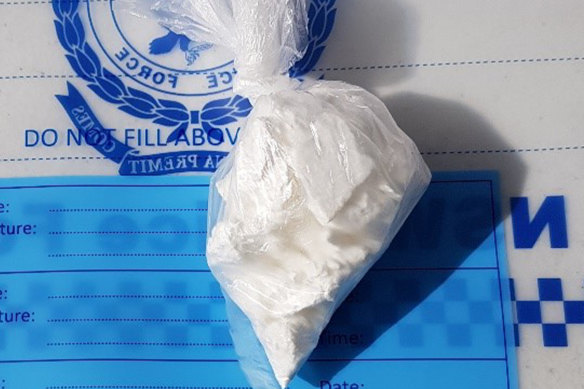By Perry Duffin
Sydney’s cocaine use has rebounded, as new data shows the city consumed more of the drug in December than any other time in the past two years, and most arrests for possession of the $300-a-bag drug are taking place in the CBD and eastern suburbs.
The Australian Criminal Intelligence Commission released data on Tuesday night showing Sydney consumed 13 doses of cocaine per 1000 people per day in December 2022.

Cocaine is on the rise after two years in decline. Sydney is still topping the nation for the drug.Credit: Police Media
That is a significant reversal from the historic low set in August 2022, when Sydney ingested just three daily doses.
The most recent records, from February 2023, put cocaine at six grams daily.

ACIC acting CEO Matt Rippon warned cocaine and ice were on the rise despite major drug seizures. Credit: Dominic Lorrimer
Police are finding cocaine at extraordinary rates in Sydney’s CBD and eastern suburbs, the NSW Bureau of Crime and Statistics announced last month.
Sydney City local government area had 366 arrests for cocaine possession per 100,000 people in the year to March 2023 – more than 10 times the state’s average and about a third of all cocaine possession arrests in NSW.
Waverley LGA has the next highest rate of cocaine arrests at 265 per 100,000 people, then Woollahra with 146 arrests and Randwick with 117 arrests – more than triple the NSW average.
The ACIC wastewater report gives authorities a glimpse of what 15.5 million Australians put through their bodies in December 2022 and February 2023. In NSW, more than anywhere else, that was cocaine.
“NSW consumption of cocaine was well above any other jurisdiction,” ACIC investigators concluded.
The ACIC does not release the names or locations of particular wastewater facilities that participate in the study, so specific suburbs are not named in the report.
But one Sydney water site recorded a “particularly high cocaine consumption”, the ACIC said.
Sydney’s cocaine habit is higher, in terms of doses per person, than MDMA, oxycodone or fentanyl. Only ice is in dramatically more demand in Sydney, and makes up 80 to 90 per cent of the nation’s stimulant diet.
Drug use is not uniform across Australia, wastewater shows, and cocaine is particularly concentrated in NSW cities. Previous wastewater reports show NSW is consistently the top consumer of the drug.
“On average, the capital city cocaine consumption was more than double that of regional areas,” the report says.
“A site in NSW had particularly high cocaine consumption. Overall, NSW consumption of cocaine was well above any other jurisdiction.”
One map, among the dozens of graphs inside the report, shows Sydney’s cocaine usage dwarfing regional NSW, Melbourne, and every other city.
That is not the case for all drugs, or even all stimulants. Methamphetamine, also known as ice, appears similarly popular across all capital cities.
Regions have slightly lower use of ice, but again appear similarly matched across the country.
“Despite large seizures of some illicit drugs by law enforcement, the average consumption of methylamphetamine, cocaine, MDMA, MDA, fentanyl and ketamine has increased in both capital city and regional sites,” ACIC acting CEO Matt Rippon said.
“The sole beneficiaries of this increased consumption are serious and organised crime groups which make significant profits from their illegal activities.”
National Alcohol and Other Drug Hotline 1800 250 015.
The Morning Edition newsletter is our guide to the day’s most important and interesting stories, analysis and insights. Sign up here.